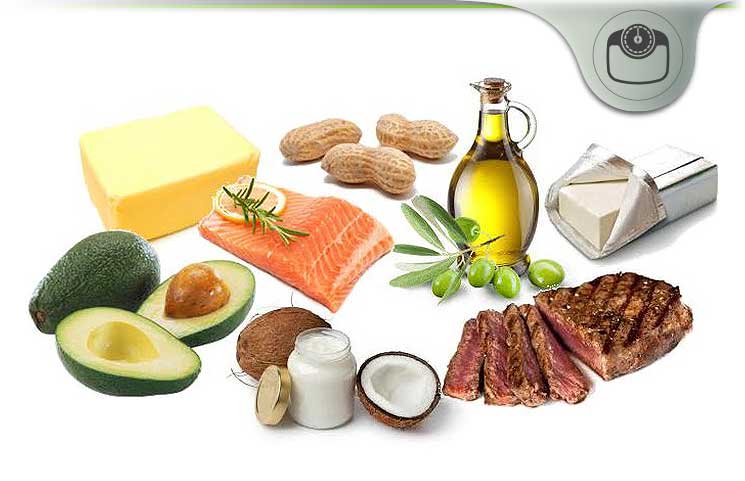The ketogenic diet is one of the most powerful diets in the world, and is able to deliver a wide range of health benefits. Following the ketogenic diet literally reprograms the metabolism to convert fat stores directly into energy, transforming the body into a highly efficient fat burning machine that is able to drop down to single digit body fat percentages in a few short months.
The health benefits of the keto diet aren’t limited to simple fat loss, however. Individuals in a state of ketosis report higher levels of cognitive function and focus as well as higher energy levels. The Keto diet is even able to reverse the damage caused by diabetes, prevent seizures, and has even been demonstrated in some clinical trials to help the body protect itself from cancer.

The core concept behind the keto diet is that carbs should be completely eliminated. The modern diet is structured around the consumption of carbohydrates, which are converted by the body into blood sugar. When the blood sugar levels of the body are depleted, the average diet then provides more carbohydrates, which means excess energy stored as fat is never actually used.
As the keto diet completely removes carbs, the body must find an alternative source of energy. In order to power the body, a metabolic state called ketosis occurs, in which the body converts fat from both dietary intake and fat stores into “ketones”, which are used in lieu of sugars.
Entering a state of ketosis allows dieters to access the 40,000 calories that are stored in the fat deposits of the average human body, and enables the use of dietary fats like MCT oil and other unsaturated fats as fuel. One of the biggest advantages of the keto diet is that it makes it possible to build lean muscle mass while avoiding catabolism, which is a massive advantage for bodybuilders and fitness enthusiasts.
While the benefits of the keto diet are obvious and the principles simple, putting keto dietary techniques into practice is much harder. Many fitness and health enthusiasts attempt to begin a ketogenic diet and then fail just a few days in. Keto failure is almost invariably caused by either a lack of preparation or inadequate dietary intake tracking, which is essential to succeeding in attaining ketosis.
If you’re reading this article, you’re probably already sold on the idea of giving the keto diet a go. Instead of focusing on the benefits of the keto diet in this article, we’ll be focusing on the best methods of kickstarting the ketogenic process in your body and breaking down the basics to help you get started.
We’ll provide a few tips on the best way of getting started, as well as a simple grocery list and meal plan that will help you convert your body into a mean, lean, fat burning machine.
As the induction phase of the ketogenic diet is the most common point of failure, we’ll begin with some of the most important elements that you need to focus on during the critical first month of the ketogenic diet.
Keto Meal Plan Beginner's Guide:
The Importance Of Macros

The number one most important factor in succeeding in achieving ketosis is calculating and tracking your daily macros. Many fitness enthusiasts and dieters assume that they’ll be able to play fast and loose with their macronutrient intake and still achieve ketosis, but this is far from the truth.
Ketosis is a high-performance state that requires careful planning and discipline to achieve, so without a meticulously balanced macro intake, ketosis is near-impossible to achieve.
Tracking macro intake may be somewhat tedious, but it’s made far simpler with free smartphone apps such as MyFitnessPal, which are able to provide an instant breakdown of the macronutrient content of virtually any food item. If you’re planning on succeeding with the keto diet, macro tracking is paramount.
The keto diet functions in a diametrically opposite manner to the diet that most of us have been raised on. Due to skewed clinical investigations performed in the early 60’s that were largely influenced by sugar manufacturing companies in the US, fats have been the bogeyman of the dieting world for more than half a century, with sugar, the real culprit behind cardiovascular disease, largely ignored.
The ketogenic diet essentially eliminates carbohydrates, cuts protein intake almost in half, and dramatically increases fat intake. If you’re used to a standard bodybuilding diet that recommends 0.6 grams of protein per pound of bodyweight at a bare minimum, you’re going to be surprised and worried but the extremely low protein intake required by the keto diet.
The keto diet, when broken down into a macro division, looks something like this:
- Fat intake: 75%
- Protein intake: 20%
- Carbohydrate intake: 5%
The easiest way to get started with controlling your macronutrient intake is by focusing on cutting down on carbohydrates, as they are the primary obstacle between you and ketosis. In the induction stage of ketosis, the general consensus states that it’s important to keep carbohydrate intake below 50 grams daily, but some nutritional experts advise aiming even lower.
As a general rule, keeping your carbohydrate intake lower than 5% of your total caloric intake is a safe level of carb intake, which, for the average person, works out to around 30 grams of carbs daily. When calculating carbohydrate content, however, don’t panic- it’s important to remember to calculate the net carb content of a food, not the total carbohydrate weight.

Net carbs are calculated by subtracting the fiber content weight of food from the total carbohydrate weight. A good example of this is a one cup serving of cooked broccoli. The total carbohydrate weight of one cup of cooked broccoli may be 11.2 grams of carbohydrates, but as it contains 5.1 grams of fiber, which can’t be digested by the body, in reality it contains a net carb value of just 6.1 grams.
For this reason, high fiber foods are a powerful tool for ketogenic dieters, assisting with healthy digestive function, satiety, and bowel movements while still adhering to the strict macro rules necessary to achieve ketosis.
Keto & Protein Intake Explained
When it comes to protein intake, the keto diet can be confusing, and for some dieters, a little concerning. Any fitness enthusiast that aims to build lean muscle mass is used to aiming for excessive protein intake to ensure that the body has enough raw materials to create new muscle tissue. The low protein intake demanded by the keto diet often makes bodybuilders start to sweat, with dreaded words like “catabolism” being thrown around.
The keto diet recommends an intake of between 0.6 and 1 gram of protein per pound of lean body weight. It’s important to note that this value isn’t calculated with the total body weight of the dieter, but is instead calculated with the lean mass value.
In order to determine your body fat percentage, you’ll need to grab a tape measure and enter some measurements into an online body fat calculator. This method isn’t super accurate, but is good enough for calculating protein intake values for keto.
To determine your daily protein intake while on the keto diet, follow the procedure below- but keep in mind that you’ll probably need to update this every couple of weeks, as your body fat percentage will change. We’ll run through a simple lean mass calculation with the average male body weight of 190 pounds at 15% body fat:
- 190 lbs (weight) x 0.15 (body fat percentage) = 28.5 b of total body fat
- 190 lbs (weight) – 28.5 lbs (total body fat) = 161.5 lbs lean mass value
- 161.5 lbs (lean mass value) x 0.6 (low protein intake) = 96.9 grams daily
- 161.5 lbs (lean mass value) x 1.0 (high protein intake) = 161.5 grams daily
If you sit in the average range for body fat percentage and total body weight, your daily protein macros should look something like this. These figures may look a little concerning to die hard bodybuilders, who may worry that making such a drastic change to daily protein intake will cause muscle development to stall.
Paradoxically, however, the ketones that are generated during ketosis cause a “protein sparing” effect, which means the body is able to utilize protein far more efficiently, building more lean muscle from less protein.
Surprisingly, most keto dieters find that they are able to pack on lean muscle mass much faster during ketosis due to the protein sparing effect.

It’s incredibly important while practicing a ketogenic diet to ensure that your protein intake is accurately measured and controlled, as given the chance, the body will actually convert protein into carbohydrates. Specific amino acids, which compose much of the protein that we eat, are gluconeogenic, which means the body can break them down and convert them into carbohydrates.
The rate at which your body utilizes protein is unique to you, so in order to determine how much works best for your metabolism experimentation is key. Begin by lowballing your protein intake at around 0.6 grams per pound of lean body fat, and observe your lean muscle mass development, gradually increasing protein intake. Ketone detection strips are a highly efficient way to determine whether your protein intake has thrown you out of ketosis in this experimental phase.
Increase Fat Intake
While the protein intake aspect of the keto diet may require a little napkin math and seem somewhat complex, the fat intake element of keto is easy. The keto diet essentially demands as much fat as you can handle, as fast as you can handle it. During ketosis, the body converts dietary fats directly into ketones, so feel free to pack on the fat.
Once you’ve established your carbohydrate limits and protein boundaries, working out how much fat to include in your diet is as simple as determining the caloric value of the first two macronutrients, and filling the rest of your daily caloric goal with fat calories. The laws of thermodynamics still apply during ketosis, however, so be sure to eat at a caloric deficit if you want to speed up weight loss, or eat at a surplus if you want to get huge and stay huge.
Increasing fat intake is one of the most troubling aspects of the keto diet for many dieters, as most of us have grown up with the concept of fat = unhealthy programmed into our brains, associating high fat intake with high cholesterol, cardiovascular disease, and obesity. In reality, it’s actually high sugar intake that causes these health conditions, not high fat intake, but making the mental paradigm shift to powering the body with fat can be tough on an inflexible mind.
When selecting dietary fats to fuel your ketone engine, be sure make healthy fats a high priority, avoiding not-so-great fats like corn oil, vegetable oil, and other trans fats. The best kinds of fats for keto are saturated fats, such as butter, olive oil, fatty meats, peanut oil, even lard and animal fat. If you have a culinary passion for foie gras, it’s definitely okay to indulge while following the keto diet.

Keto Foods: What To Eat And What To Avoid
Now that you’ve covered your macro basics and are ready to get started, it’s time to go grocery shopping. Before leaving the house you’ll want to make sure that your home is free from any food that contains excess sugar or carbs, as in the first few weeks of keto, carb cravings can hit hard, seriously testing the strength of your will.
Following is a list of common foods that are incompatible with the keto diet:
- Anything high in sugar: sweets, candy, cake- get rid of it.
- High carb snacks: chips, pretzels, crackers- in the bin they go.
- High carb foods: say goodbye to pasta, pizza, carrots, potatoes, onions, and even garlic.
- Fruit: once a healthy snack, now a high-fructose enemy. Avoid entirely.
Now that your home is free from temptation, it’s time to get some high-fat, low carb groceries. Keto shopping, however, can get expensive fast. The best bet for keto shopping is to create a basic meal plan in advance, planning out how you’re going to meet your macro needs for the week in advance.
Buying meat in larger bulk portions, separating it into smaller plastic wrapped portions, and freezing is a great way to cut down on protein costs while on keto. Consider swapping out porterhouse steak for canned tuna if you’re on a budget, as it’s far more cost effective, and contains a decent amount of omega fatty acids. Remember to grab a meal at home before you hit the market, as shopping on an empty stomach will net you an empty wallet.
Following is a list of basic staples you can grab to build your keto meal plan:
- Meat: Chicken, beef, pork, and fish. Both beef and chicken will provide a great ratio of fat to protein, while chicken breast is leaner on the fat.
- Eggs: Eggs are the perfect keto food, offering five grams of fat and six grams of protein.
- Leafy Greens: Spinach, collard greens, kale, and lettuce are all your friends on keto, boosting fiber intake and regulating bowel movements.
- Cheese: Cream cheese, mozzarella cheese, cottage cheese, cheddar, brie, it’s all good.
- Vegetables: Mushrooms, beans, broccoli, eggplant, bell peppers, and asparagus are all great for the keto diet. As a general rule, if it grows above ground, it’s good to eat.
- Butter: Perfect for cooking in, or slamming into the first coffee of the day to make bulletproof coffee.
- Milk & Cream: Use liberally and frequently. Both heavy cream and sour cream are powerful energy boosters while on keto, but stay away from dairy if you’re lactose intolerant.
- Oils: Olive, peanut, sesame, avocado, and macadamia nut oil all contain high levels of healthy ketone fuel.
- Avocado: One avocado contains a massive 29 grams of fat. Highly versatile.
- Beef or Chicken Bone Broth: A paleo diet favorite, also compatible with the keto diet.
- Herbs & Spices: Basil, oregano, pepper, paprika, cinnamon, dill, cayenne pepper, cardamom, and turmeric all add flavor to keto meal plans without a carb impact.
- Salt: The keto diet causes the body to require higher salt intake, at a minimum 3,000 mg daily compared to the average 2,000 mg daily. Remember to drink plenty of water while on keto, and double your salt intake.
As a general rule, it’s best to avoid artificial sweeteners, or even natural sweeteners while on keto. Some experts argue that carbohydrate and calorie free sweeteners such as erythritol can induce an insulin response in the body even though they don’t contain sugar.
Artificial sweeteners like aspartame have been clinically proven to cause brain cell death, gastrointestinal disorders, and infertility, so it’s best to avoid them anyway. Stevia is a viable natural option if you absolutely must indulge your sweet tooth, but it has been observed to function as a potent phytoestrogenic compound when consumed regularly, balancing testosterone production, so use sparingly.
Keto Flu: What It Is And How To Beat It

Many keto dieters experience what is referred to as the “keto flu” in the early stages of the keto diet. A common broscience topic, the dreaded “keto flu” is purportedly a low-energy, difficult, and painful hazing period that the body subjects new keto dieters to in the induction phase. It’s likely that most instances of “keto flu” aren’t caused by the transition into ketosis itself, but instead caused by poor macro intake in the induction phase.
Switching your body into ketosis is, in reality, incredibly easy. If you’ve ever performed cardio for an extended duration and experienced the “second wind” that comes after the glycogen stores in your muscles have been depleted, then you’ve experienced ketosis. In fact, intermittent fasting is a great way to kickstart the ketosis process and skip the low energy state that many people experience at the beginning of the ketogenic diet.
The body still takes some time to adapt to a full ketogenic metabolic conversion, a state that usually lasts about four weeks. All of the side effects that are associated with the “keto flu” aren’t caused by metabolic change, but are actually caused by micronutrient deficiency. Jumping right into the ketogenic diet without planning ahead often causes electrolyte deficiency, which you’ve experienced if you’ve ever had a hangover.
A foolproof strategy for dominating the keto flu is to ensure that you’re providing your body with three specific electrolytes- sodium, potassium, and magnesium. We’ve already covered the importance of salt in the previous section of this article, but adding the other two micronutrients into your diet is just as easy. Both magnesium and potassium can be found in high levels in leafy green vegetables, avocado, and nuts.
Nuts like almonds, pecans, walnuts, pistachios, and cashews are all high in magnesium content, but be careful to watch the carbohydrate content of these foods. If you’re concerned about the carb content of your nuts, it’s fine to add a magnesium supplement into your diet, but be sure to choose a chelated magnesium supplement such as magnesium citrate to ensure bioavailability.
If you’re at the gym and begin to experience muscle cramps while following the keto diet, or develop headaches, you’re probably low in electrolytes. Grab yourself a serve of bone broth with a high sodium content, or eat some salted pistachios, and you’ll find the “keto flu” quickly disappears.
Keto & Supplements
Supplementation is a critical part of the fitness, health, and bodybuilding process. Fortunately, the ketogenic diet doesn’t require drastic changes in supplementation habits. All of the major supplements are fine to incorporate into your diet, with creatine, caffeine, beta-alanine, and l-arginine all getting the green light.

Branched chain amino acids, or BCAA supplements, can be a little more tricky. As mentioned previously in this article, high protein intake can throw the body out of ketosis as the metabolism is able to convert its amino acid content into glucose. Similarly, some of the amino acids in BCAA supplements are glucogenic, meaning the body is able to convert them into glucose.
One of the amino acids in BCAA supplements, valine, has been proven to be glucogenic. However, some napkin math shows that BCAA’s aren't as dangerous to keto as many “experts” claim. Branched chain amino acid supplements are commonly created with a 4:1:1 or a 2:1:1 ratio of leucine, isoleucine and valine, with only the last amino acid presenting a glucogenic threat.
The daily recommended BCAA dose is just 40 grams, so at either amino acid ratio, the maximum amount of glucose the body could manufacture from a BCAA supplement is between 6 and 10 grams maximum, which is well within macro limits. Still, it’s important to keep this information in mind when managing daily macros.
Supplementing your diet with a protein shake after a workout is still a good option for boosting protein intake while following the keto diet, but always make sure it fits in your macros.
If you’re in the habit of taking a preworkout, ensure that it’s free from carbohydrates. A great way to boost energy levels and physical performance during a workout is to add a dose of MCT oil or a similar healthy, fatty oil to your preworkout to give your body a ketone boost.









